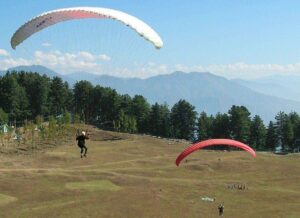Last Updated on October 7, 2021 at 12:52 pm
Kashmir is losing its agricultural land as 78,000 hectares of agricultural land has been converted for non-farm activities in Kashmir division in the last six years.
Because of the rapid urbanization, unplanned constructions of housing colonies, commercial complexes, factories have majorly damaged the agricultural land.
Moreover the agricultural and ecological resources of the state have been damaged. The thing to worry about is that experts believe that in Kashmir in near future there will be hardly any land left for agriculture purposes.
As per the official figures, conversion of an estimated 78 thousand hectares (which is equivalent to 15.4 lakh kanals) of farm land for non-agricultural purposes in Kashmir has taken place from 2015. Kashmir had 4, 67,700-hectares of agricultural land in 2015 which has shrunk to 3, 89,000 hectares in 2019. Kashmir has lost 78,700 hectares of agricultural land to non-agricultural purposes since 2015.
Land under paddy cultivation in Kashmir region reduced from 1,48,000 hectares in 2015 to 1,40,000 in 2018 whereas maize cultivation shrank from 100,000 hectares to 76,000 hectares over these years.
Accordingly, cultivation of pulses has declined from 14,600 hectares to 12,767 hectares. Oilseed cultivation also dropped from 86,000 hectares to 81,000.
Director Agriculture Kashmir, Chowdhary Muhammad Iqbal said that exact details of conversion of agriculture land for nonfarm activities can be given by revenue department but conversion of farm lands is happening across Kashmir which is a reason to worry not only for the government as well as locals.
Previously, an Economic Survey report had revealed that unabated conversion of agricultural land in Jammu and Kashmir for non-agriculture purposes was making 60% of the State population poorer by the day. The report read that this sector ironically supports more than 60% of employment and the effects can be easily seen in the disparity ratio between average incomes of agriculturists and non-agriculturists, which has been increasing.



